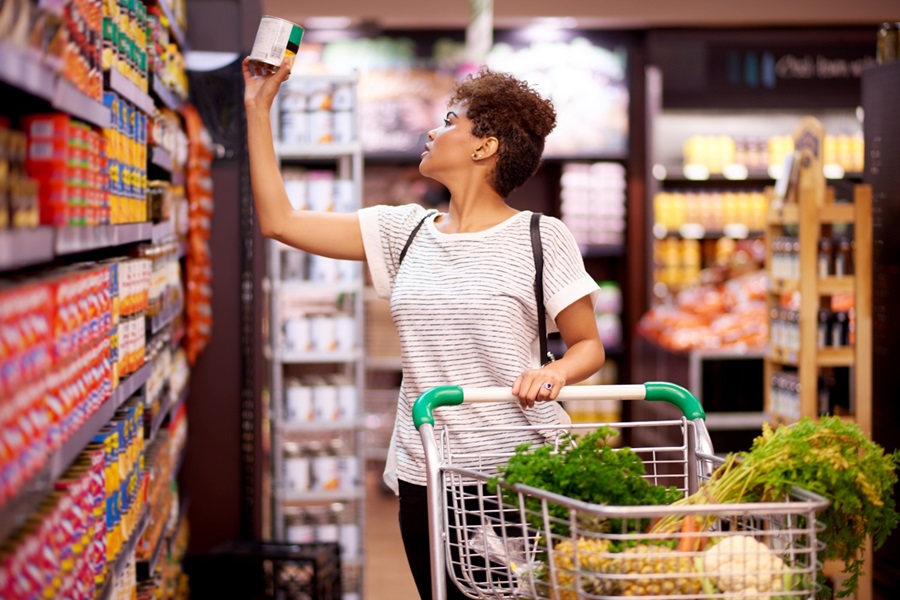Our latest take-home grocery figures show that Irish supermarket sales fell by 7.3% over the 12 weeks to 20 March 2022. Sales are still up on 2020, although only by 1.3% as the comparison now includes the record demand for groceries before the first national lockdown in March 2020.
In the latest four-week period sales have declined by 7.7%, with Irish shoppers spending €78.2 million less on take-home groceries. All our remaining COVID-19 restrictions have eased across Ireland and that’s making its mark on grocery sales. Not only are people heading back to the office, but they’re also enjoying returning to pubs, cafés, and restaurants, and as a result are picking up more food while on the go, rather than from the supermarkets.
Inflation challenges shopper habits
The end of restrictions has coincided with price rises across the high street, and grocery inflation now stands at 3.7% – the highest level since October 2013. As spiralling costs bite at the heels of retailers and shoppers, supermarket prices are being pushed up. The number of products sold on promotion has dropped by 5.7% as the grocers look to mitigate supply chain pressures, and we’ve seen a marked increase in the average price of staples like bread, butter and toilet paper over the last 12 weeks.
Inflation, rather than the pandemic, is now the main driver of changes to consumer behaviour in Ireland. This is a stressful time for consumers and that anxiety is being felt on the shop floor. With promotions down, shoppers are focused on seeking out the cheaper alternatives. Private label’s share of the grocery market is on the rise and has grown by 1.2% since last year. Retailers’ own lines now account for 46.3% of total grocery sales. Headlines around shortages of pasta and flour have also seen sales of those products soar, with both categories boosted by 22% and 30% respectively during the month of March.
This latest data period also marks two years since the first lockdown. It’s becoming clearer which pandemic grocery habits are here to stay. The growth of online shopping has been one of the most staggering shifts to shopper behaviour in recent memory, with all retailers now offering some form of online shopping. Since 2018, online’s share of the market has grown by 3.1 percentage points, a boost largely driven by couples without children who are natural converts to online technology. Since the same period in 2018, the proportion of this demographic buying online has nearly doubled, going from 14% to 26% in March 2022. By 2024, we estimate that online will hold a 6.6% share of total grocery sales – a figure which would have seemed crazy before COVID-19 came along.
After months at home, it’s safe to say that we’re all a lot more comfortable flexing our culinary muscles and an increase in cooking from scratch remains reflected at the tills. Sales of home baking and home cooking ingredients continues to see strong growth, growing 14.6% and 20% respectively since 2019. Tea and coffee are another good example. Hybrid working means sales of hot beverages shot up by 23% over the latest period compared with pre-pandemic when we spent a lot more time in the office. Personal hygiene remains top of the agenda too. Sales of liquid soap are up 36% compared with 2019.
Cautious shoppers turn to cheaper alternatives
All of the major retailers saw take-home grocery sales fall in the 12 weeks to 20 March 2022. The competition between the grocers is ramping up as people hunt for the best deals. Those grocers with strong messaging on lower average prices and promotional offers are best placed to come out on top.
Dunnes retains its position as Ireland’s largest grocer and holds a 22.4% market share this period. SuperValu has pipped Tesco to second place, with the retailers claiming a market share of 21.6% and 21.3% respectively. Lidl follows behind with a 13.0% share of the market, while Aldi holds 12.4%.


